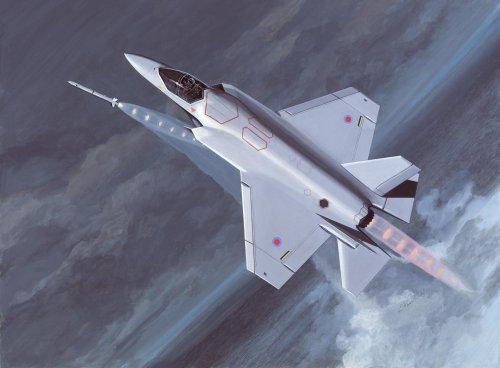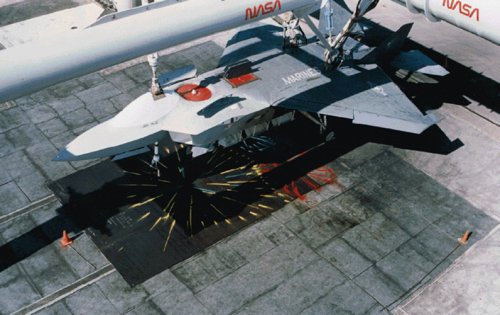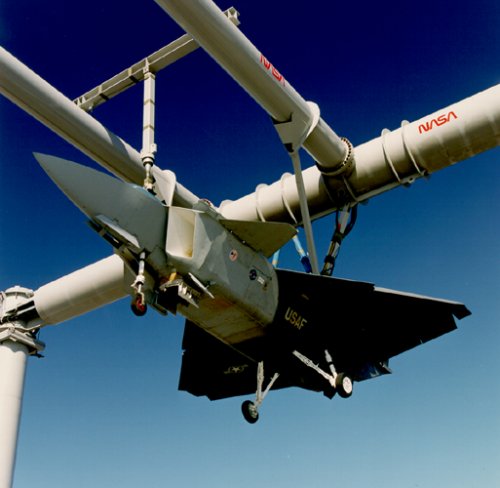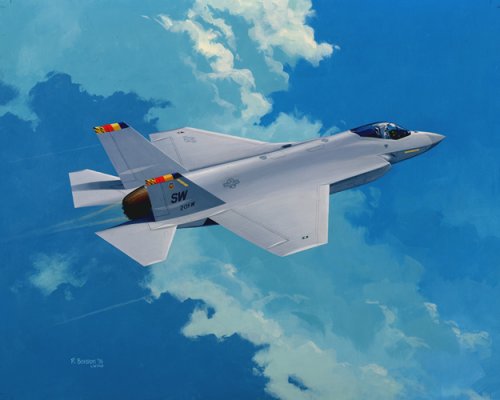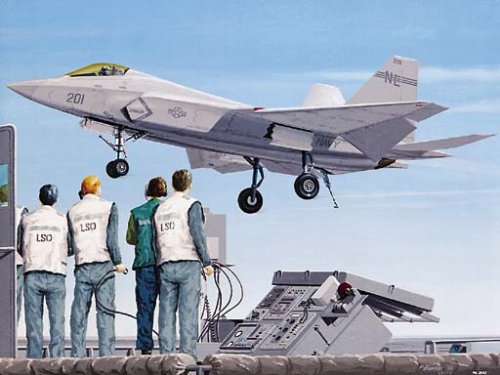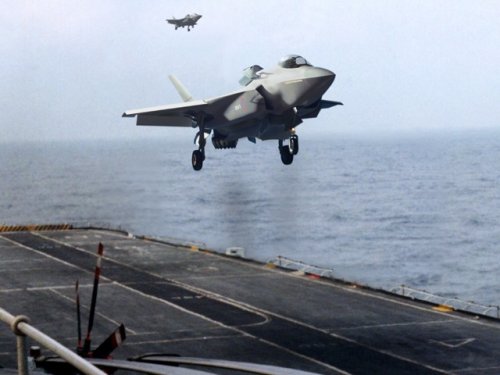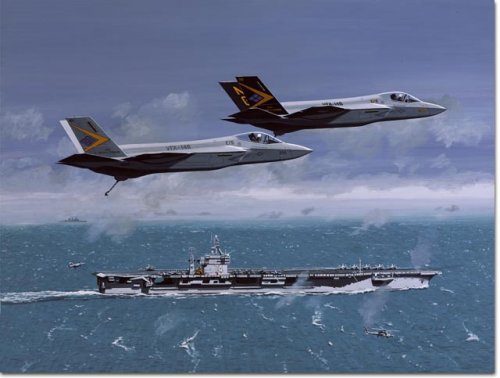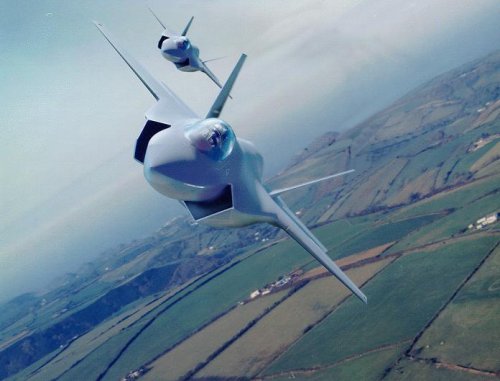In 1994, two design studies were conducted to explore the benefits of applying AAW Technology to subsonic multi-role fighters. These studies applied AAW technology to wing designs that did not have the supersonic requirements of the earlier ATF study.
In the first study (5), Lockheed Aeronautical Systems Company conducted a conceptual design study on a joint USAF, USN, USMC multi-role aircraft configuration, shown in Figure 9. The aircraft was a single seat, single engine design with a "butterfly" type all-flying empennage. The engine was equipped with a pitch vectoring nozzle. The wing, shown in Figure 10, was supplied by Rockwell and had an aspect ratio of 3.84, a 40 degree leading edge sweep and a 4 % thickness-to-chord ratio.
Using conventional wing design, the baseline configuration had a TOGW weight of 48,278 lbs. Following application of AAW Technology, the resized aircraft had a TOGW of 44,866 lbs. , a 7.1% weight savings. Based upon the estimated cost of $1000 per lb. for fighter aircraft structure, this weight savings translates into a production cost savings of approximately $3.5 million per copy.
(5) Norris, M., and Miller, G.D., "AFW Technology Assessment", Lockheed Aeronautical Systems Company and Rockwell-Aerospace Report No. NA 94-1740, December 1994.
